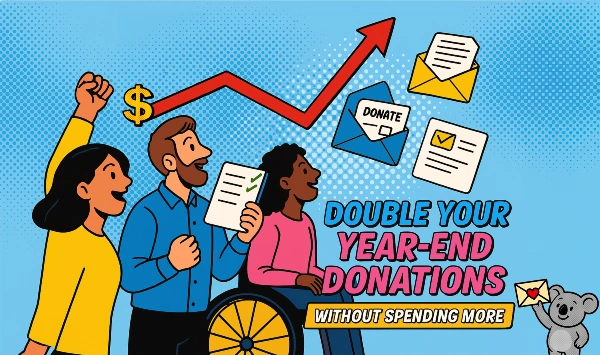I used to make this same mistake over and over. Especially on Mondays.
I’d start my workday by sitting down at my computer. My email inboxes (I have three of them) were all full. So I went to work emptying them.
Mondays especially, there’d be so many emails clamoring for my attention. It’s like digging through heavy, sloppy dirt.
A couple of hours (or more) later, I’d come up for air, my inbox clear.
Then I’d start in on my real work — the stuff I enjoy, that I’m good at, that people pay me to do. Thinking and writing.
Problem is, I would run out of gas after just an hour or so.
My built-in Protestant Work Ethic would insist that I keep at it anyway. “I’m not even a Protestant,” I would futilely argue, but to no avail. I was tired, unfocused, and frustrated. Not doing my best work. Struggling twice as hard and making half as much progress.
I’m guessing this sounds familiar to you. If not in the details, in the outline: We all hit a productivity wall at some point almost every day. We don’t know why. It vexes us and even makes us feel guilty.
This was my constant problem until a few months ago when I read a short article in The Guardian that turned on the light for me: “Let’s hear it for the four-hour working day”. Here’s the key point:
How much proper brainwork … should you aim to get done in one day? The answer isn’t some sophisticated version of: “It depends.” The answer is four hours.
Think about that for a minute.
You have four good hours a day.
Not 8, or 12, or whatever you (or your boss) may hope you have.
Four hours a day. That’s what you get.
Knowing and working with this truth will change your work life.
Of course, most of us have considerably more than four hours of stuff to do every day. But you can do a lot of that stuff outside of your four good hours. Here are the three steps that will help you set up your day to make the most of your best time:
1. Divide your work into two categories
Separate the administrative parts of your work from what the Guardian article calls “Proper Brainwork.” I’m talking about the tasks that demand all of your thinking and creativity — the work that gives you joy, where you have the most impact, what you’re really being paid to do.
Proper Brainwork is usually writing (any creative work), strategy, planning — the thinking-based work. Admin work is the stuff you need to do, but it’s not quite as involving. If you’ve never thought of it this way, you might find this challenging. Here are some tasks that are likely to be administrative:
- Answering email. This is a large category of work for most. It eats up time, but doesn’t require your Four Good Hours.
- Certain meetings — you know, the kind where your attention can wander a bit!
- Paperwork, like timesheets, invoices, and other forms of record-keeping.
You may have some tasks that fall somewhere between admin and Proper Brainwork. For now, just choose one category or the other. You can change your mind later!
With all your tasks divided this way, it’s your job to match the brainwork with your Good Hours. Which leads to the next step …
2. Discover when your Four Good Hours are
You might already know when they are. Most people don’t because they’ve never thought about it. It may take a couple of weeks of experimentation: Start with when you think your best times might be, then schedule tasks accordingly. Keep a journal to help yourself pinpoint your best times. Here are some things to note about this:
- Your Four Good Hours might not be all in a row. (Mine straddle my lunchtime.)
- Your Four Good Hours might not be exactly four hours. For most people, it’s somewhere between three and five hours.
- Your Four Good Hours might not be during the workday. Some people are at their best early in the morning, before most people’s day starts. Others’ inner genius comes to life late at night. If you’re one of these “not during office hours” people, you may need to do some negotiating with your colleagues. But it’s worth the effort to do your work when you work your best.
3. Protect your Good Hours like a tiger!
This is the hard part. But it’s what makes this whole thing so powerful. You need to keep admin stuff out of your Best Hours. You have to be strict and disciplined about this, because the more you let admin encroach on your Good Hours, the less effective you will be.
You face two enemies as you do this:
- Your colleagues. They may want (or need) you to do admin tasks on schedules that work for them. Resist! But don’t be a jerk. There are likely times when you need to bend your rules for the sake of the team. Just be aware that the more you bend, the less effective you’ll be!
- Yourself. You’ll likely find that you are a much more dangerous enemy than your colleagues are. Sometimes admin tasks call out to you, singing their temptations to use up your Good Hours. Self-discipline makes all the difference!
When you follow these steps, you will be on your way to a much higher level of productivity, creativity, and joy in your work.
Here are a couple of things worth noting:
You will sometimes have days with Zero Good Hours. Stress, illness, and life situations can erase those hours. Don’t beat yourself up when it happens. Don’t even worry, unless it goes on for a long time. That may be a sign that you are facing burnout and need to take some serious steps to protect yourself.
We’ve all experienced times when we had a lot more than Four Good Hours — when we worked around the clock, energized by an emergency or raw inspiration, and did amazing work for much longer than your normal amount. It happens, and it can be great. But it’s not normal. Don’t build your life around these magical moments.
Most of the time, you’ve got Four Good Hours. Not more. Grab them!
Make the absolute most of those important hours by getting help with whatever fundraising challenges you face. Schedule a free 25-minute call with Fundraisingologist Sean Triner. He’ll give you great free advice and help you identify your best path forward. Click here to book your call.
Related Blog Posts:








